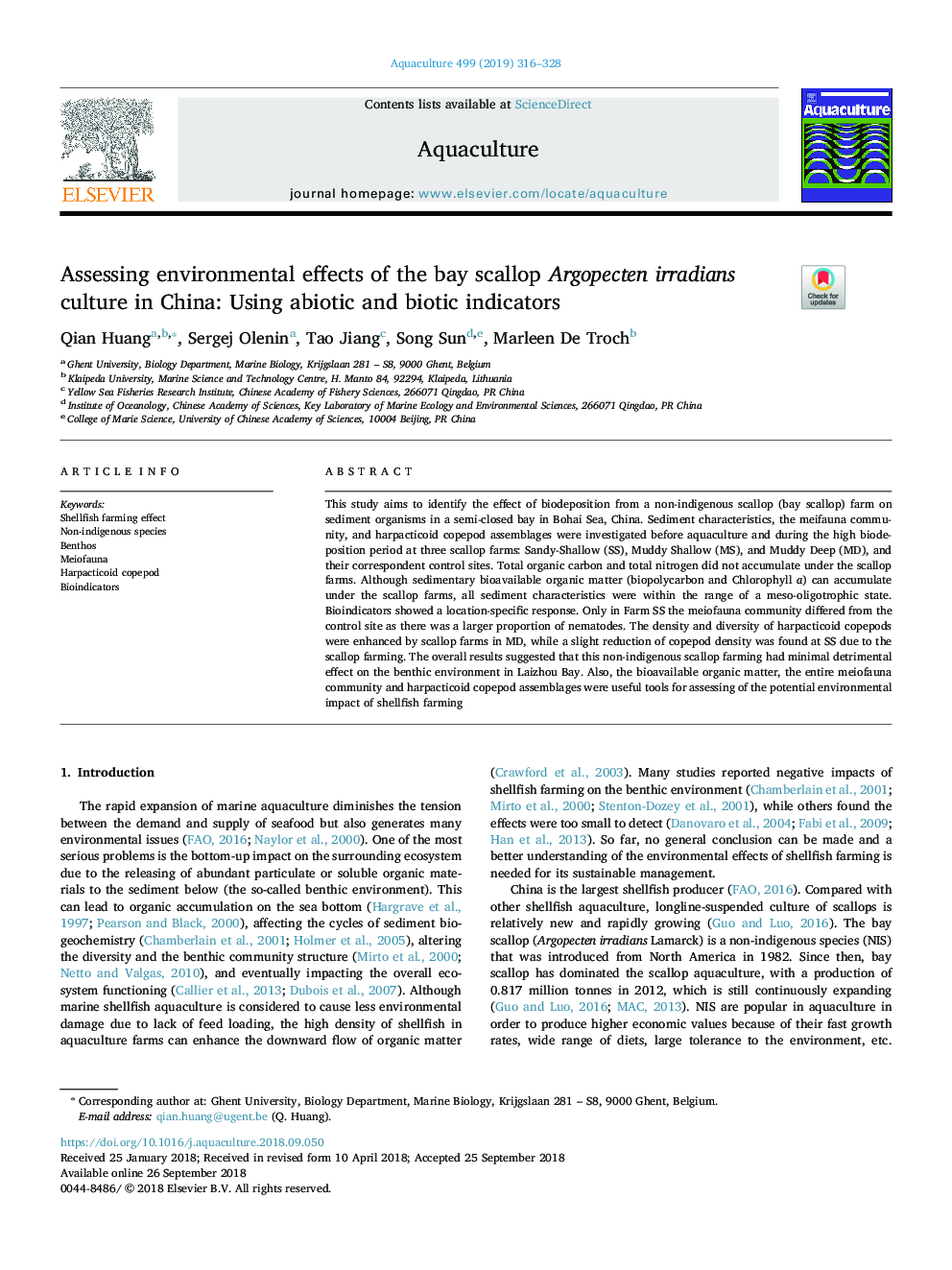| Article ID | Journal | Published Year | Pages | File Type |
|---|---|---|---|---|
| 11025869 | Aquaculture | 2019 | 13 Pages |
Abstract
This study aims to identify the effect of biodeposition from a non-indigenous scallop (bay scallop) farm on sediment organisms in a semi-closed bay in Bohai Sea, China. Sediment characteristics, the meifauna community, and harpacticoid copepod assemblages were investigated before aquaculture and during the high biodeposition period at three scallop farms: Sandy-Shallow (SS), Muddy Shallow (MS), and Muddy Deep (MD), and their correspondent control sites. Total organic carbon and total nitrogen did not accumulate under the scallop farms. Although sedimentary bioavailable organic matter (biopolycarbon and Chlorophyll a) can accumulate under the scallop farms, all sediment characteristics were within the range of a meso-oligotrophic state. Bioindicators showed a location-specific response. Only in Farm SS the meiofauna community differed from the control site as there was a larger proportion of nematodes. The density and diversity of harpacticoid copepods were enhanced by scallop farms in MD, while a slight reduction of copepod density was found at SS due to the scallop farming. The overall results suggested that this non-indigenous scallop farming had minimal detrimental effect on the benthic environment in Laizhou Bay. Also, the bioavailable organic matter, the entire meiofauna community and harpacticoid copepod assemblages were useful tools for assessing of the potential environmental impact of shellfish farming
Related Topics
Life Sciences
Agricultural and Biological Sciences
Aquatic Science
Authors
Qian Huang, Sergej Olenin, Tao Jiang, Song Sun, Marleen De Troch,
